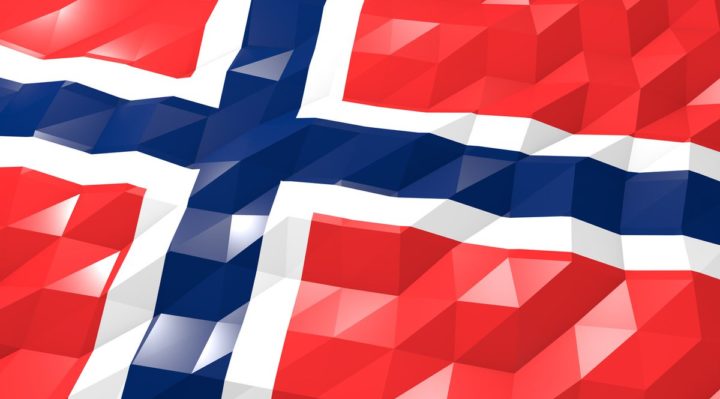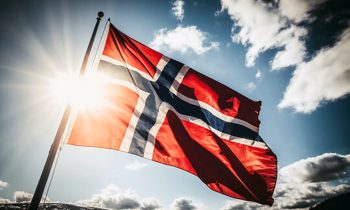Article from Minister of International Development, Dag-Inge Ulstein, and Minister of Digitalisation, Nikolai Astrup, together with Mitchell Baker (chairwoman of Mozilla) and Henrietta H. Fore (Unicef director). The article is published at Devex, the media platform for the global development community.
This month marks the 30th anniversary of the launch of the World Wide Web, one of the most influential and far-reaching communication tools in human history. The web, and the internet as a whole, has inspired entrepreneurs all over the world to create, develop, and produce digital goods and services on a massive scale across a vast array of industries, some for philanthropic purposes, but the majority purely for profit.

And profit they have, at a staggering rate. This year alone, it is estimated that internet-based companies will generate upward of $3.45 trillion in sales globally, creating countless millionaires and billionaires along the way.
While no one can fault ambitious entrepreneurs for seeking their fortune, as concerned leaders from the public and private sector, we believe that digital goods can and should do much more to help the most vulnerable people in the world, particularly children, improve the fundamental qualities of life. In a world full of lucrative “smart tech” we are advocating for equitable “good tech.”
Examples of good tech are all around us in the areas of information, education, health care, finance, and more. These technologies can create access to the information, job skills, and empowerment that young people need to shape their future. Wikipedia may be the most prominent, but there are many others we can point to which help people learn, communicate, and make sense of the world around them.
Unfortunately, far too many good ideas for digital public goods lack a sustainable revenue model and many are so underfunded they never get off the ground. That is why the four of us have united to say that making digital public goods available and accessible — particularly to girls and others left out of the current technology boom — is a necessary step toward a larger, more vibrant ecosystem of products and services that improve life for users of all ages, races, or socioeconomic demographics.
The Norwegian-managed open-source District Health Information System 2, or DHIS2, helps health ministries, health clinics, and other health institutions do their jobs better. The free platform is now used in over 100 countries and has a global footprint of 2.3 billion people. The relatively new field of mobile health uses mobile telephony to create easier, individualized access to relevant information, counseling services, health records, and more.
Platforms such as UNICEF’s RapidPro have allowed this access to spread across parts of the world where simple feature phones far outnumber smartphones.
Other mobile tools — built for simple phones — allow adolescents and youth to have a say in the policies that directly affect them. UNICEF’s open-source U-Report, started in 2011 as an initiative to hear from young people in Uganda via SMS, has now spread to 55 countries and more than 6.5 million users. “U-Reporters” share opinions and information on topics that affect them with UNICEF and governments, creating an intergenerational dialogue that places young people at the forefront of change.
Mozilla is a nonprofit organization that creates products such as Firefox and Firefox Lite for low-bandwidth environments explicitly to create internet infrastructure as a digital public good. Mozilla has been a rare example of digital public goods finding a sustainability model that has been adequate to allow development of additional products and technologies.
One example is Mozilla’s Common Voice, which makes voice recognition — the technology that underlies virtual personal assistants including Alexa — free and open for anyone to use or integrate into a new product.
For those who are lucky enough to be connected to the internet, particularly for its youngest users, digital public goods can literally change their futures. These tools can provide personalized learning experiences, help teenagers manage mental health questions, allow girls individual and private access to menstrual health apps, and create pathways to employability for young and old alike.
But no matter how groundbreaking or innovative a digital public good might be, it’s of limited use if it can’t reach those who need it most.
The author William Gibson was sadly prescient when he argued more than 25 years ago that: “The future is already here — it’s just not evenly distributed.” Today, more than 40 percent of the world’s population has no, or very limited, internet access. While the rate of connectivity is rising steadily, 3.3 billion people, mostly in sub-Saharan Africa and Southern Asia, are not internet users. Typically the least connected and most economically vulnerable demographic around the world are women and girls. In India, for example, it’s estimated that only 30 percent of internet users are women.
Digital public goods such as those listed above, as well as many great examples developed by other stakeholders, can help institutions, companies, and individuals leapfrog and reduce unnecessary duplication of efforts. These are digital products that do good for the benefit of humankind.
On its 30th birthday, we come together to celebrate the myriad achievements the World Wide Web has helped facilitate, but also to highlight the opportunity for more to be done. Our collective vision is that over the next decades and beyond, digital public goods, and the technology to access them, will be enjoyed by everyone.Ministry of Foreign Affairs



